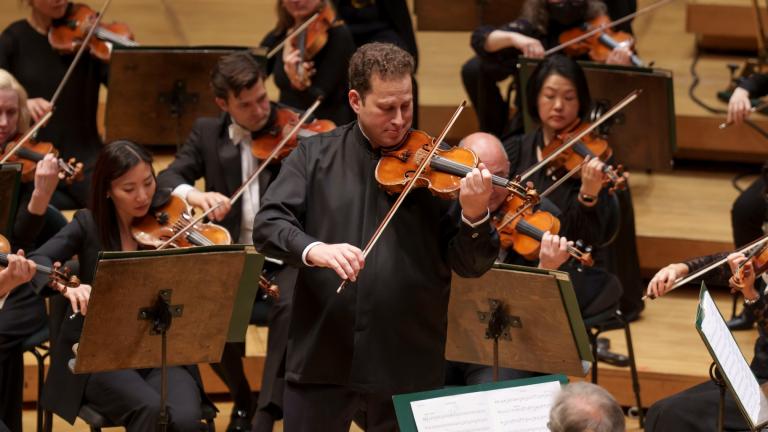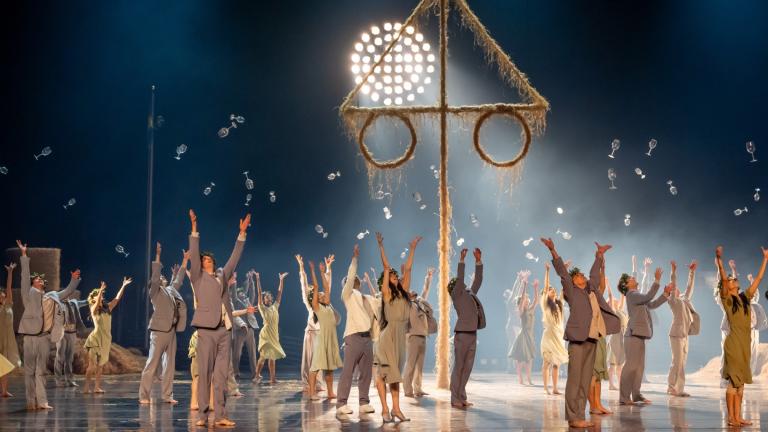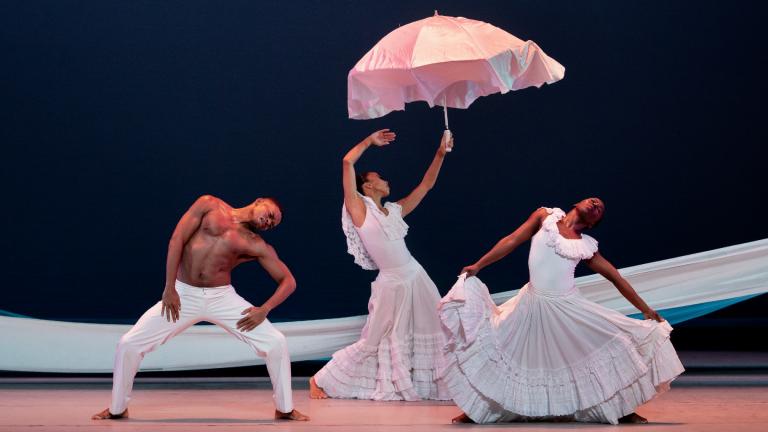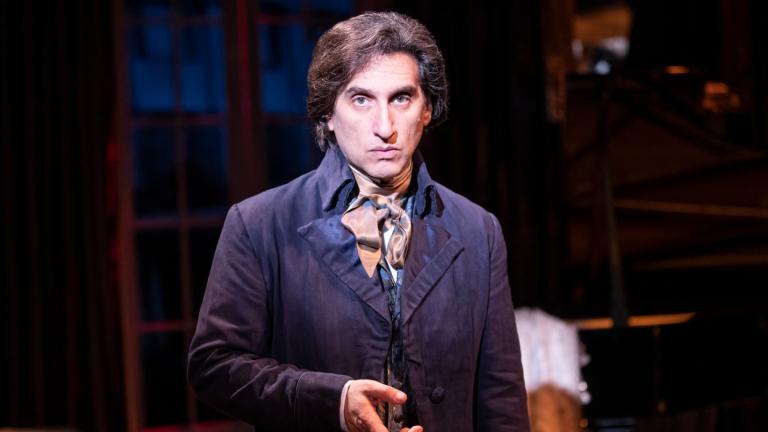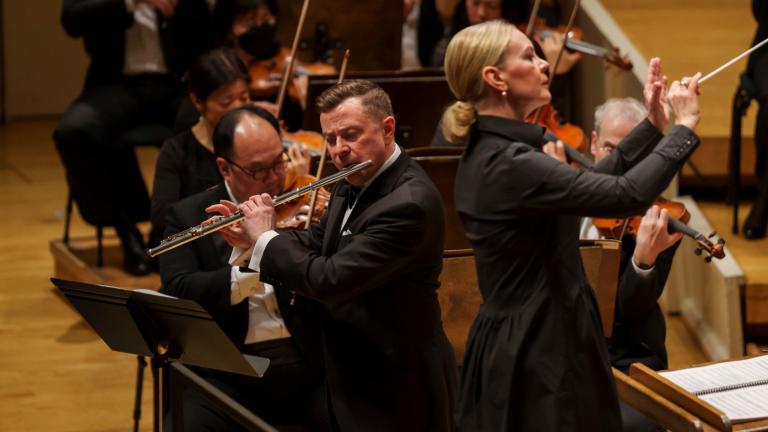 Rob Lindley and Hamid Dehghani in "Andy Warhol in Iran." (Michael Brosilow)
Rob Lindley and Hamid Dehghani in "Andy Warhol in Iran." (Michael Brosilow)
If you see only one play this season, you are advised to head straight to Northlight Theatre for “Andy Warhol in Iran,” a riveting, brilliantly imagined two-character work written by Brent Askari (a prolific playwright and actor of Persian-American heritage) and ideally directed by BJ Jones.
During the course of just 75 intensely compelling minutes that unfold entirely in a posh hotel room in Tehran in 1976, the play poses profound questions about both art and revolution and the forces that shaped two very different men.
The play’s notably real character is Warhol, captured to perfection in an absolutely uncanny performance by Rob Lindley. The fictional character is Farhad, an ingeniously imagined and wholly believable young Iranian man expertly played by Hamid Dehghani (an actor who, as it happens, was born in Iran and earned an MFA in directing from Northwestern University).
The character of Farhad speaks excellent English and lets Warhol know that he studied literature at a university in the U.S. Farhad is clearly aware of the artist’s celebrity and understands that the famous artist has come to Tehran to take photographs of the wife of Shah Mohammed Reza Palavi, who earlier met Warhol at a White House dinner and now wants him to paint the wife’s portrait.
Farhad, as we soon learn, is a serious revolutionary who is working undercover as a room service waiter at the hotel where Warhol is staying. Farhad is determined to help overthrow Palavi (a revolution that really happened in 1979) and wants to see a democratic government take hold. (Of course, ask today’s women of Iran about their lives and they might have some things to tell Farhad.)
Before Farhad ever arrives on stage, Warhol talks to the audience in the most straightforward way about his preference for solitude and communication via the phone, as well as why he has made “celebrities” — from Marilyn Monroe to Chairman Mao — the subjects of his pop art paintings. The reason is simple: They sell, as do his Campbell’s soup can paintings. Money is of the essence to him. And as he unabashedly confesses, “Fame saved my life.”
 Rob Lindley in "Andy Warhol in Iran." (Michael Brosilow)
Rob Lindley in "Andy Warhol in Iran." (Michael Brosilow)
Watch Lindley in Warhol’s quintessential jeans and jacket, with glasses and a white-blonde wig (the work of Natalia Castilla), and you will easily believe you are in the presence of a perfect reincarnation of the artist. Then capture the tense but revealing nature of Farhad, a sophisticated, relatively young man who believes Warhol might be useful as a bargaining chip.
Both men have been wounded in emotional and physical ways. And when, at one point, Farhad displays the painful price he has paid for his politics, it prompts Warhol to expose the physical scars from his near-death shooting by the radical feminist Valerie Solanas in 1968.
There is more, including a beautiful moment of poetry. But I will say nothing else aside from the fact that while I have never been the slightest fan of Warhol’s work, this play is a terrific portrait of the artist. And it should be seen.
“Andy Warhol in Iran” runs through Feb. 19 at Northlight Theatre, 9501 Skokie Blvd. in Skokie. For tickets, visit northlight.org or call (847) 673-6300.
Follow Hedy Weiss on Twitter: @HedyWeissCritic


